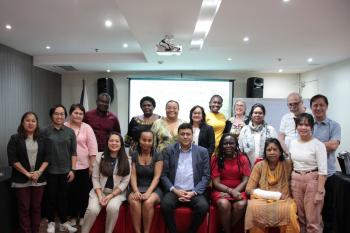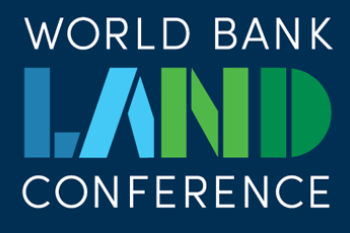The New Urban Agenda is now adopted for the next 20 years – what is the role of LAND?
The GLTN is very proud to celebrate the long awaited adoption of the New Urban Agenda at the recently concluded Habitat III Conference that brought together 30,000 participants, including 10,000 international participants from 167 countries to Quito, Ecuador. Congratulation to all of us for the hard work, the perseverance, the relentless advocacy, the countless negotiations and consultations and ultimately the strong partnership that put land at the center of the New Urban Agenda.
The New Urban Agenda gives us critical guidance for implementation and great partnership opportunities for effective and sustainable land governance interventions for the next 20 years. The role of land is very well captured in the New Urban Agenda (NUA), with its social, ecological and economic functions well articulated in the adopted document. The NUA calls for securing land and property rights for all, with great emphasis on improving access to land and natural resources by women , youth and vulnerable groups. The document recognizes the plurality of tenure types and advocates for the development of approaches that are fit-for-purpose, age, gender and environment responsive that acknowledge the continuum of land and property rights framework. It also seeks to prevent arbitrary forced evictions, promote affordable serviced land, promote access to public property and land, and recognize the importance of responsive land policies.
In several instances, the Agenda calls for the sustainable use and management of land and natural resources. For environmental sustainability, the NUA promotes sustainable land use by committing to actions that will prevent unnecessary land use changes and the loss of productive land as well as fragile and important ecosystems. The document also calls for stronger rural-urban linkages that promote the balance between the social, economic and ecological functions of land.
In terms of financial sustainability and shared economic prosperity, the document commits to sound and transparent systems of financial transfers from national government to sub-national and local governments. It calls for sharing the benefits of the increase in land and property values generated as a result of urban development projects and investments and it advocates for the adoption of land-based revenue and financing tools and the effective functioning of land and property markets that result in sustainable land use and consumption while promoting the well being of the poor, women and vulnerable groups.
The NUA recognizes the need for strong, inclusive management frameworks, accountable institutions and more responsive and fit-for-purpose land administration and management solutions if the above commitments are to be effective and sustainable.
The Draft outcome document of Habitat III that was adopted as-is is available here: New Urban Agenda After the Habitat III Conference adoption of the NUA and recommendation to the General Assembly for adoption, the final step is now for the General Assembly to formally adopt it.

